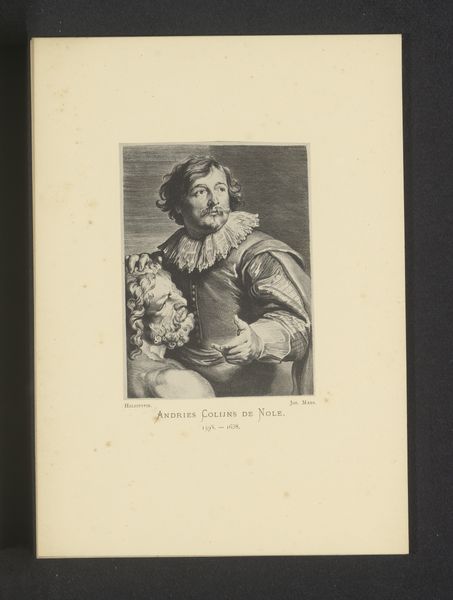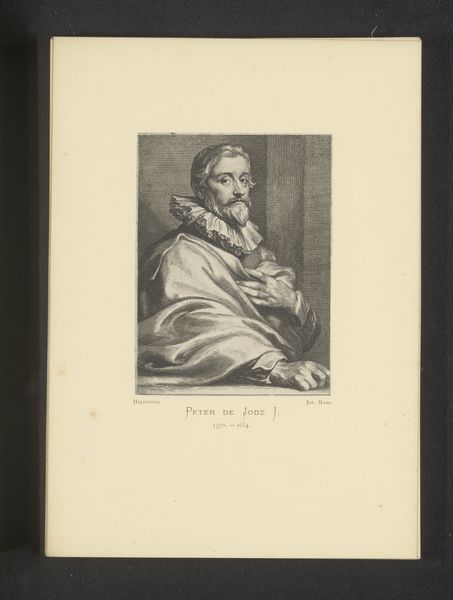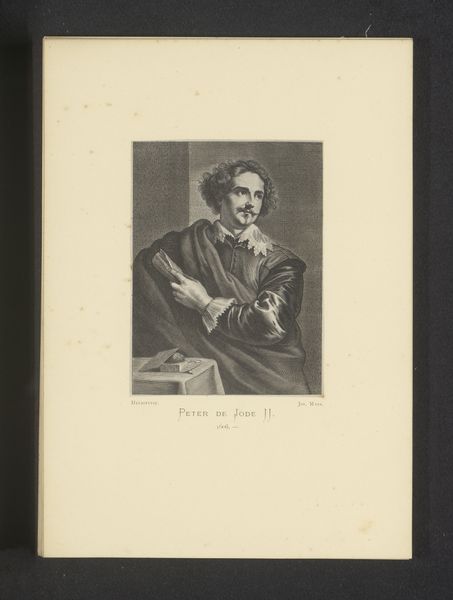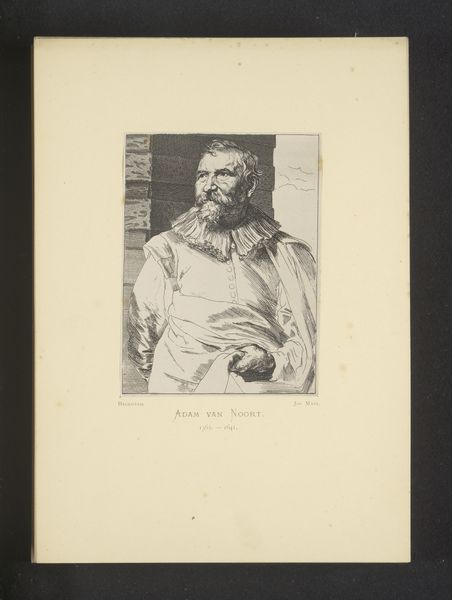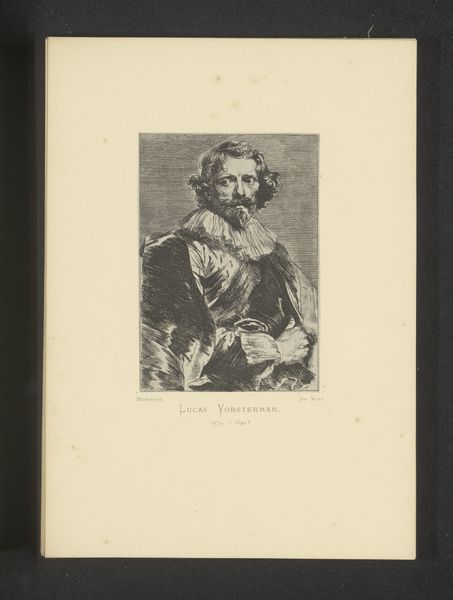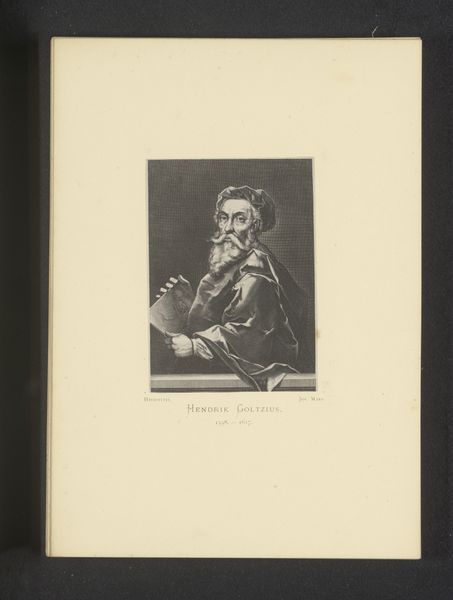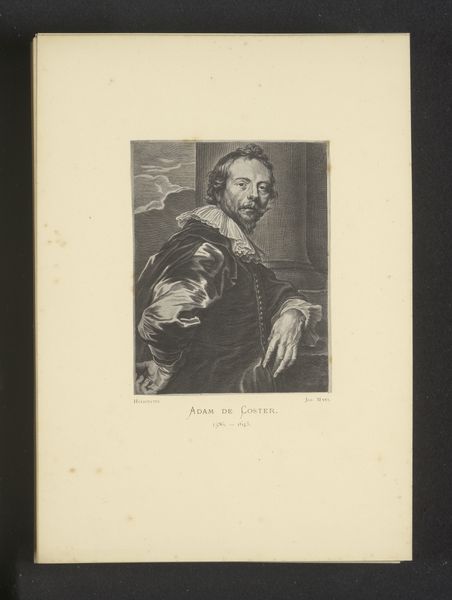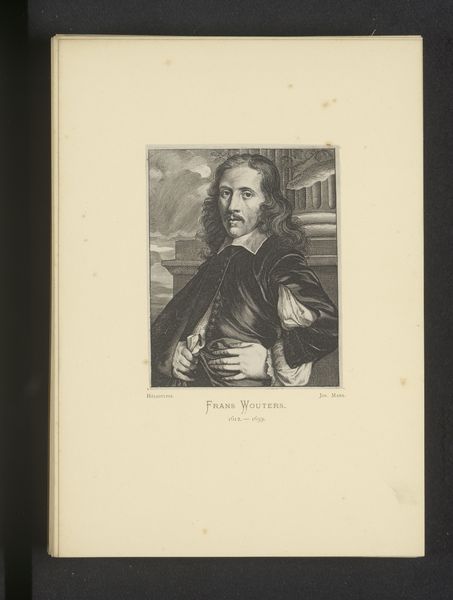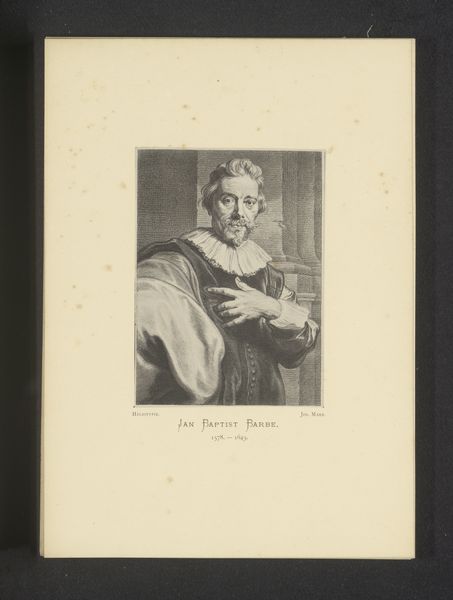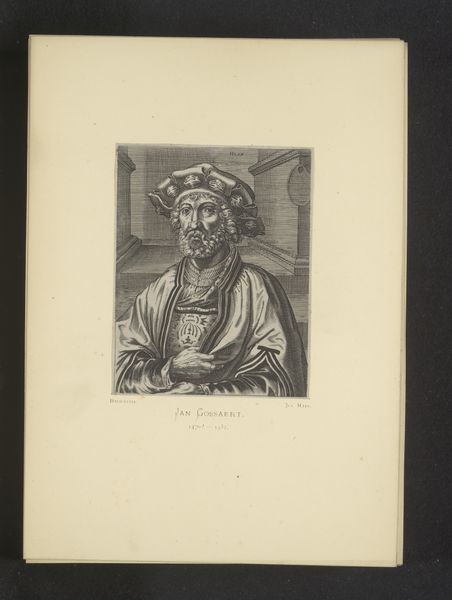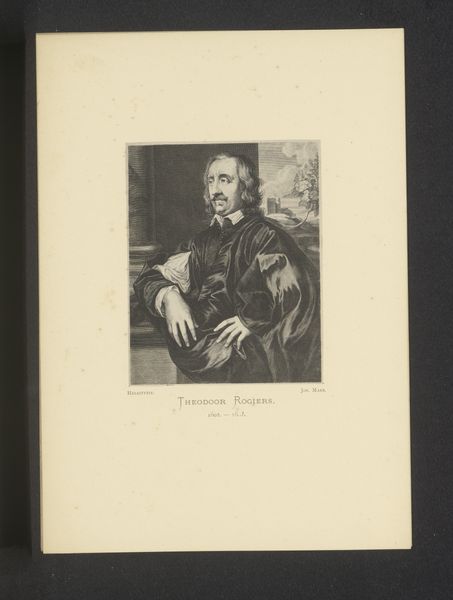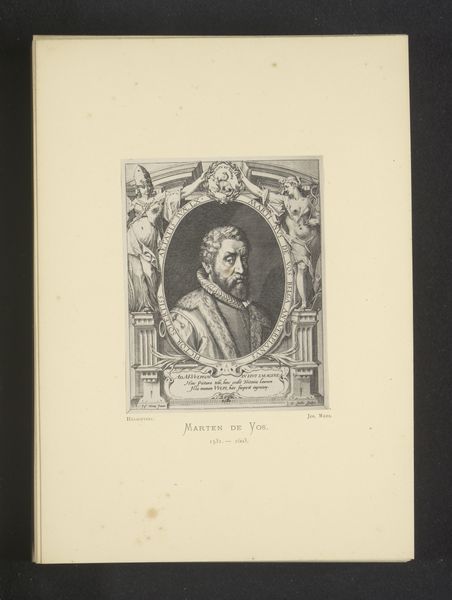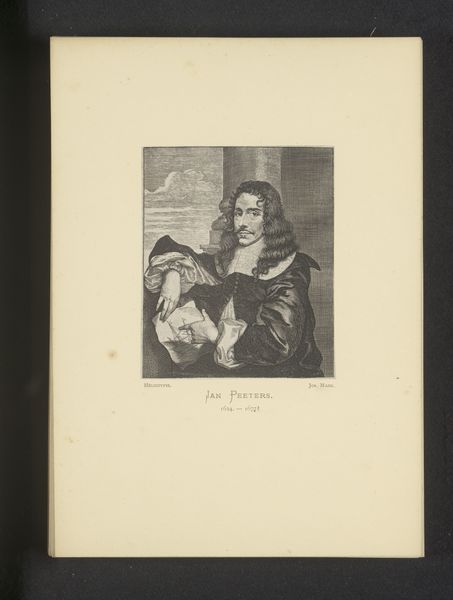
Reproductie van een gravure van een portret van Karel van Mallery door Lucas Vorsterman (I) before 1877
0:00
0:00
#
aged paper
#
homemade paper
#
paper non-digital material
#
paperlike
#
light coloured
#
sketch book
#
paper texture
#
personal sketchbook
#
folded paper
#
paper medium
Dimensions: height 120 mm, width 86 mm
Copyright: Rijks Museum: Open Domain
Curator: This is a reproduction of a portrait engraving of Karel van Mallery, created before 1877. It’s after an original by Lucas Vorsterman the Elder, from the 17th century. What strikes you initially about it? Editor: The most compelling aspect is undoubtedly the textural depth achieved. The engraver captured the look of the aged paper itself and also rendered an intimate image of the sitter. It looks fragile. Curator: Indeed. Karel van Mallery lived from 1571 to 1641 and was a prominent engraver himself, part of a larger network of artists and publishers in Antwerp. Consider the cultural implications of reproducing his image; how does this relate to the idea of artistic legacy and influence? Editor: I think we see continuity, not just of a face, but also of values and ideals transmitted through the symbol of a respected artist, literally carrying forth their memory through generations. Note the thoughtful pose, the eyes that look both knowing and sympathetic. Curator: And in that sympathy, we find complex socio-political layers. The historical context of the Low Countries in the 17th century, grappling with religious conflicts and shifting power dynamics, would have been formative for an artist like Mallery. So a reproduction, even a later one like this, is inherently tied to those earlier struggles. Editor: It seems charged, doesn't it? I agree. To engage with an image like this is also to access a visual language deeply connected with notions of artistic authority, religious conviction and personal character as manifested through carefully chosen symbolic features. Curator: It is precisely through symbols and portraiture that these narratives become embodied. I think this engraving exemplifies how power intersects with artistic representation. Editor: Well, I found a new appreciation for considering continuities. Curator: And for me, the dialogue between the historical and its reverberations is made ever so much more evident now.
Comments
No comments
Be the first to comment and join the conversation on the ultimate creative platform.
